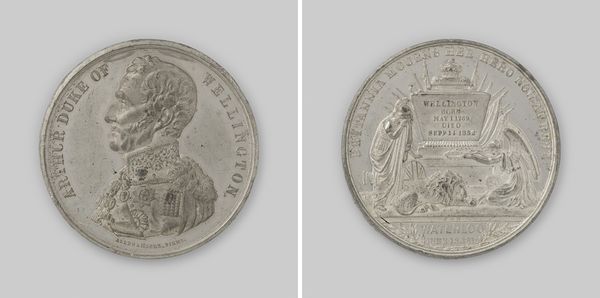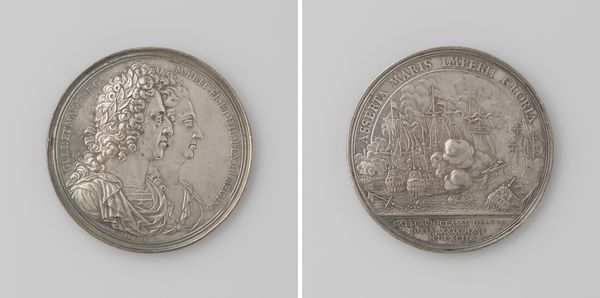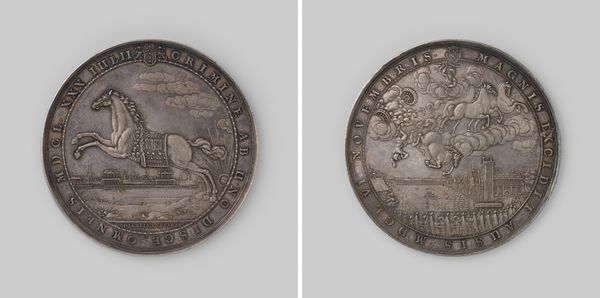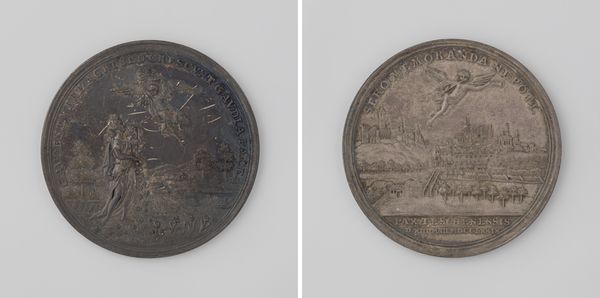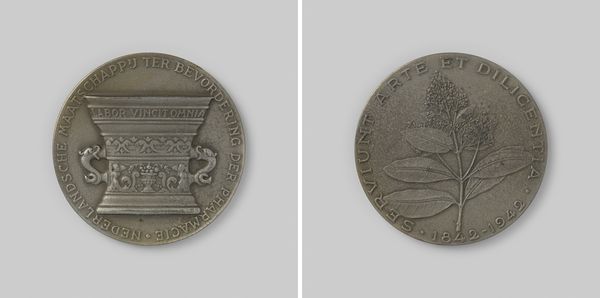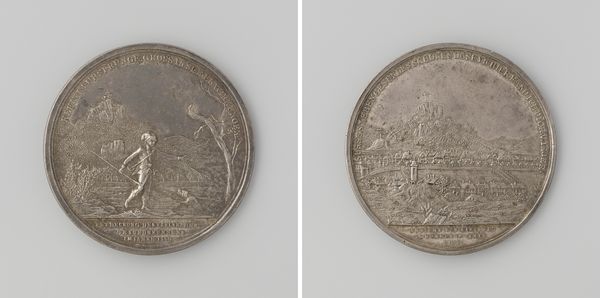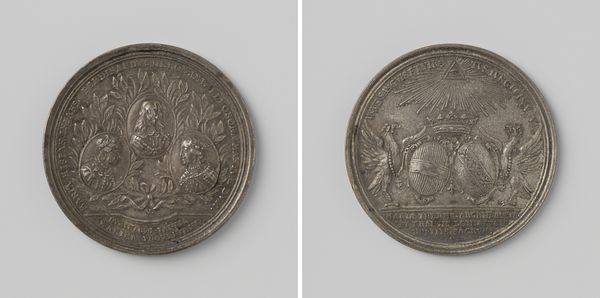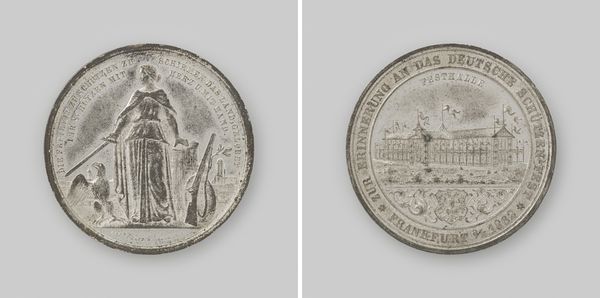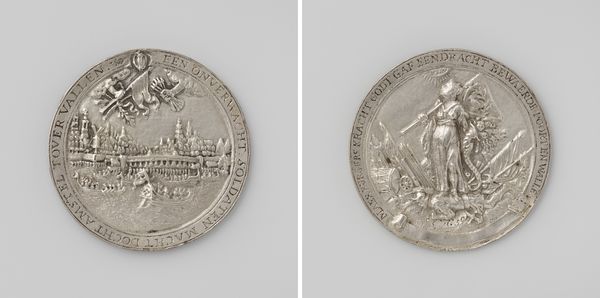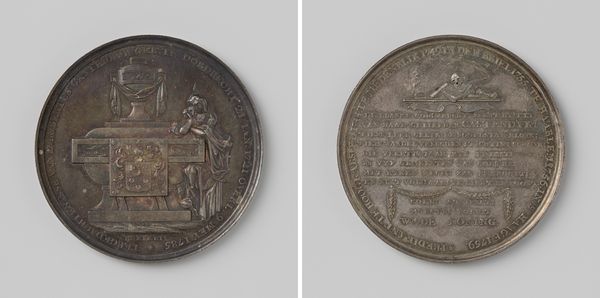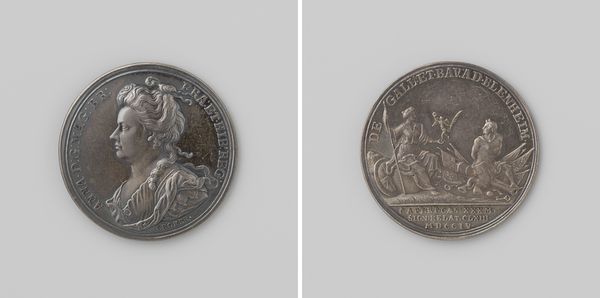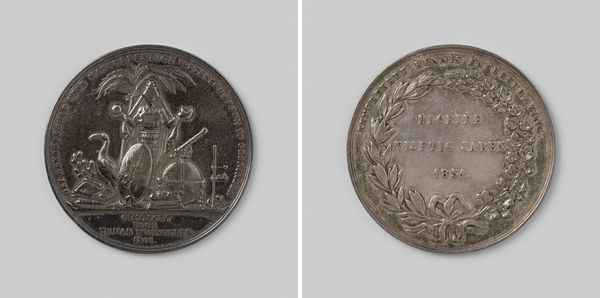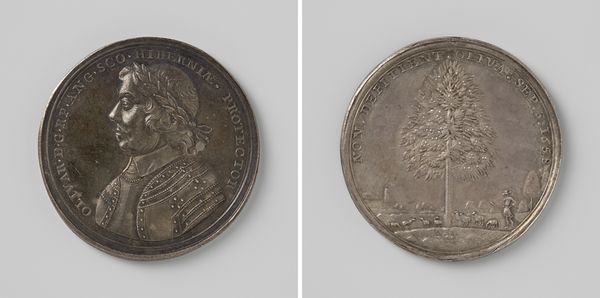
print, metal, engraving
#
narrative-art
#
baroque
# print
#
metal
#
old engraving style
#
history-painting
#
engraving
Dimensions: diameter 4.7 cm, weight 27.33 gr
Copyright: Rijks Museum: Open Domain
Editor: This is an engraving by Georg Hautsch from 1702 entitled "Zeeslag bij Vigo (Vigos): het verbranden van de Franse en Spaanse vloot", which translates to "The naval battle of Vigo (Vigos): the burning of the French and Spanish fleet." It appears to be printed on a metallic disc. The depiction of battle scenes is really detailed. What stands out to you about it? Curator: I'm interested in the material choice itself, metal, and its function. Medals like these weren't simply decorative; they served as political currency. Consider the labor involved – the mining, smelting, engraving, and distribution. This wasn't just about depicting a battle; it was about constructing a narrative, a consumable object designed to solidify power. Editor: So you're saying it’s about more than just commemorating a battle? Curator: Precisely! Who commissioned this? How many were produced? Where were they circulated? These questions lead us to understand its role in shaping public opinion and legitimizing the victors of this naval engagement. Note the text too—it's an integral part of the overall impact of the object. Editor: The metal makes it feel very official. It gives a sense of lasting importance to the event it's portraying. How does that influence the reading of it? Curator: It does! The material reinforces a sense of permanence and authority. Compare it to a drawing on paper, which has a fragility the medal decidedly rejects. The metal is meant to last, conveying a deliberate message about the enduring power of the patrons who made its production possible in the first place. Consider it as propaganda. Editor: It’s fascinating to think about the process, the social dynamics and all of that being embedded in this little disc. Thank you for pointing that out. Curator: My pleasure! By considering the materials, labor, and context, we gain a much deeper appreciation of how artworks function within a given society.
Comments
No comments
Be the first to comment and join the conversation on the ultimate creative platform.
